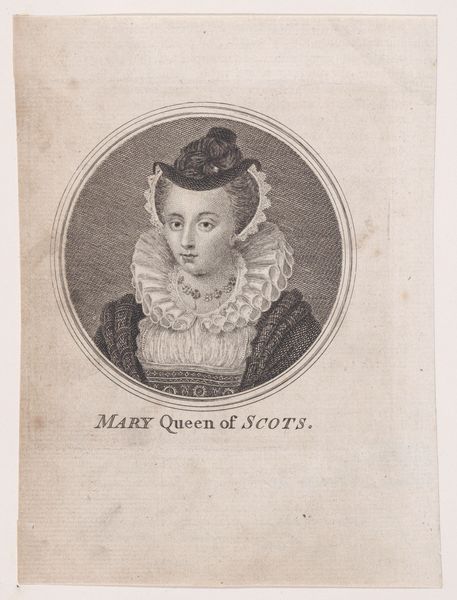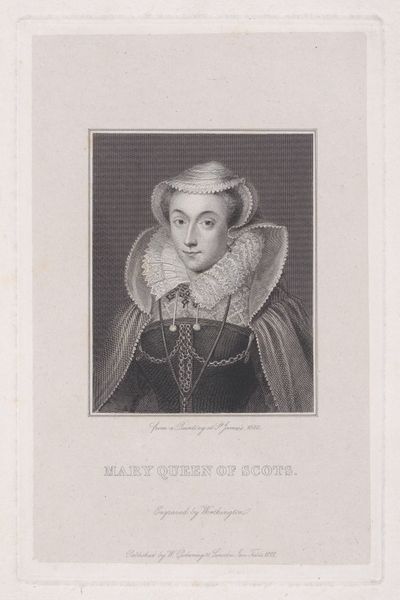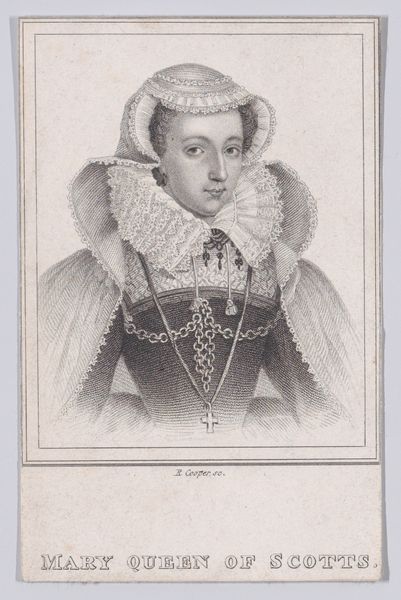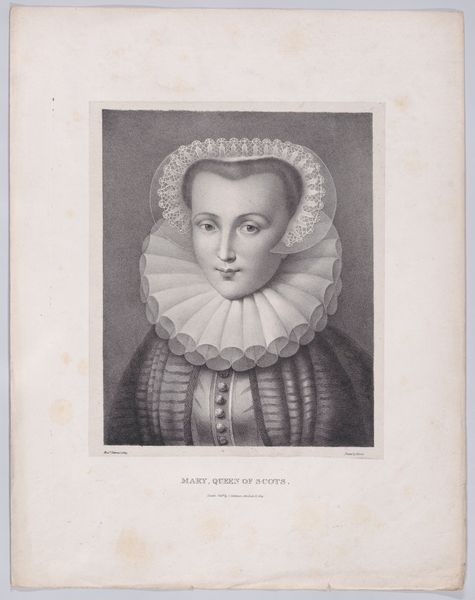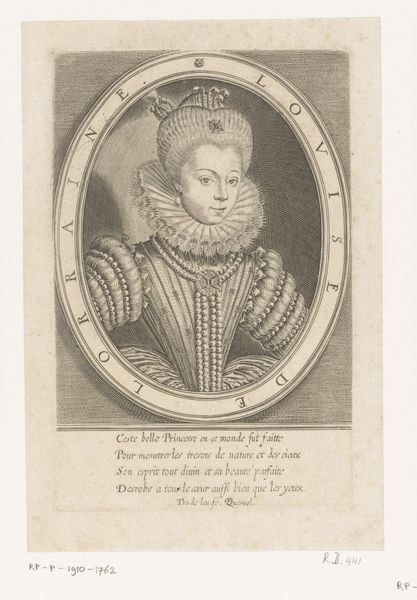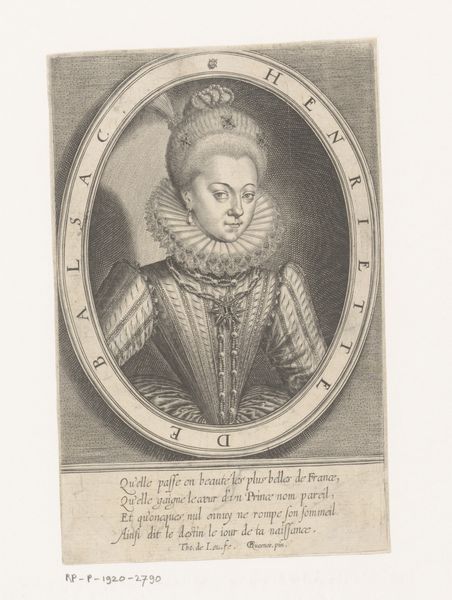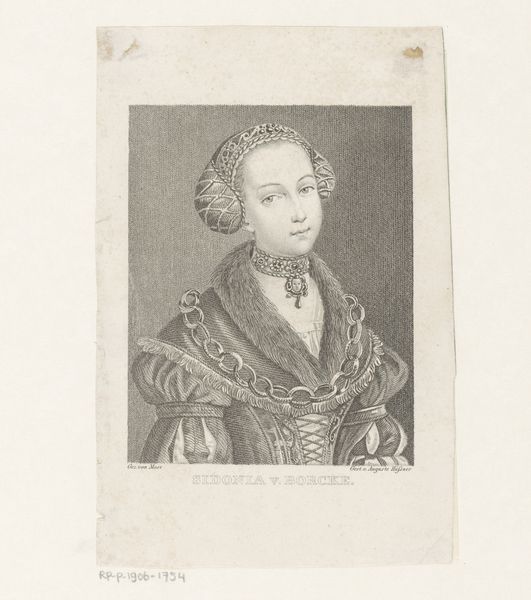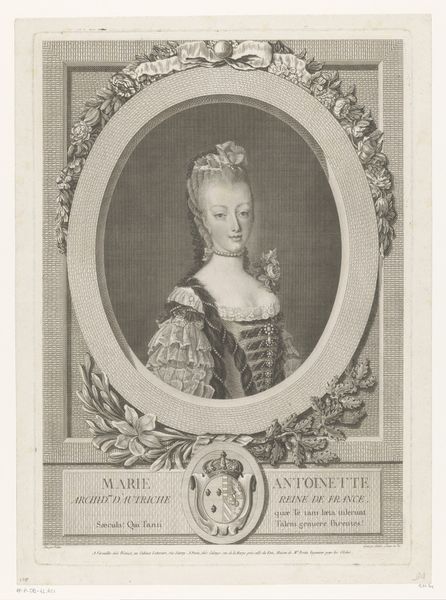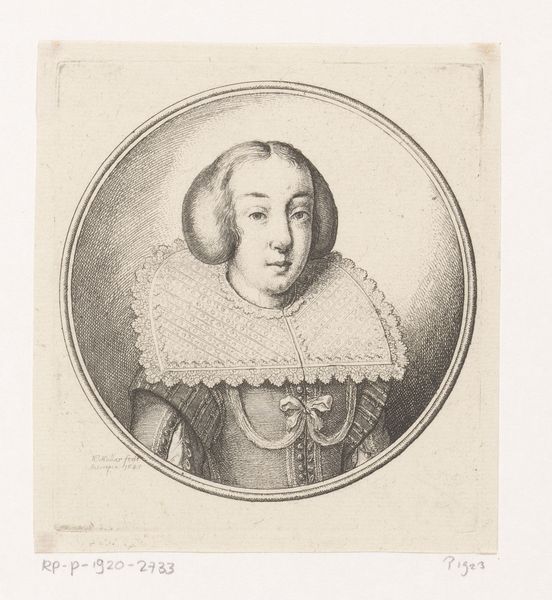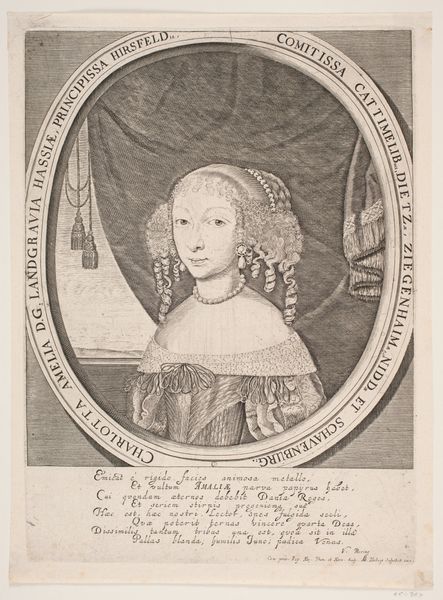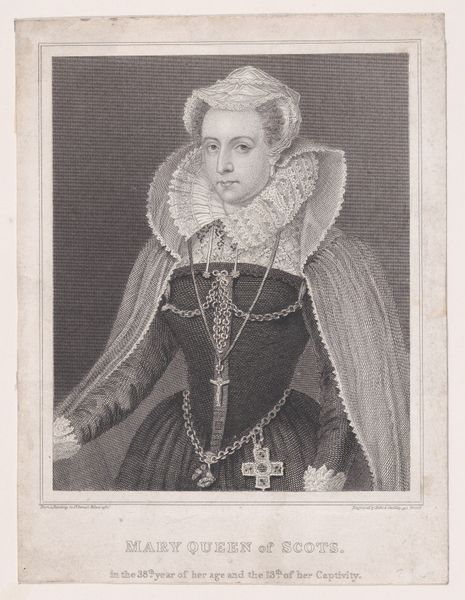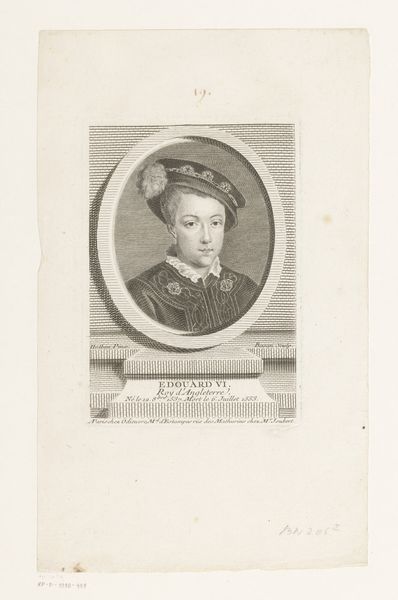
Mary, Queen of Scots (frontispiece, from "Literary Magazine & British Review," volume 2) 1789
0:00
0:00
drawing, print, engraving
#
portrait
#
drawing
# print
#
old engraving style
#
personal sketchbook
#
england
#
15_18th-century
#
history-painting
#
engraving
Dimensions: Plate: 6 5/8 × 4 5/16 in. (16.8 × 11 cm) Sheet: 7 5/8 × 4 7/16 in. (19.4 × 11.2 cm)
Copyright: Public Domain
Editor: Here we have John Hall's print of "Mary, Queen of Scots" from 1789, published in the "Literary Magazine & British Review." The fine lines of the engraving give it a formal, almost melancholic feel. What aspects of this portrait strike you as particularly relevant from a historical perspective? Curator: Considering Hall's portrait in the context of late 18th-century British society is key. It's not simply an image of Mary, Queen of Scots, but a mediated representation meant to evoke specific feelings and ideas. What kind of reputation do you think she had at that point, over two centuries after her execution? Editor: Probably one of romantic tragedy? A Catholic queen betrayed and killed by her Protestant cousin? Curator: Precisely. The 'Literary Magazine' would have aimed at a politically engaged readership. An image like this served to invoke debates about monarchy, religious conflict, and female power – or rather, the perceived threat of it. Note how Hall presents her within a contained oval, distancing her. Also, that severe ruff she is wearing— what could that communicate? Editor: Maybe an effort to portray her as dignified, but also perhaps constrained by her royal role? The formality emphasizes a kind of… imprisonment? Curator: Indeed. So the portrait, appearing in this publication, becomes part of a broader discourse. The publishers actively use imagery to stir feelings and prompt public discourse, constructing and reconstructing history for their readership. The magazine essentially becomes another stage for enacting and reinterpreting British identity. How does this affect your understanding of portraiture in general? Editor: It makes me realize it’s not just about capturing a likeness, it's about shaping a narrative and wielding political influence through art. Curator: Exactly! By examining its historical context, the engraving provides a lesson about how art contributes to broader societal conversations about power, religion, and identity itself.
Comments
No comments
Be the first to comment and join the conversation on the ultimate creative platform.
